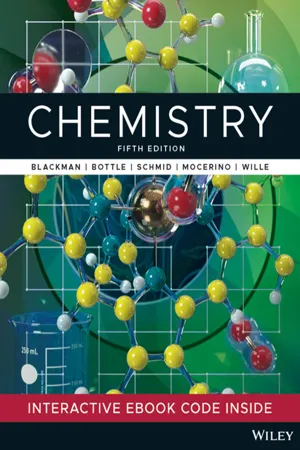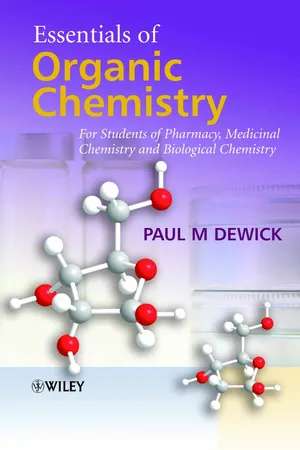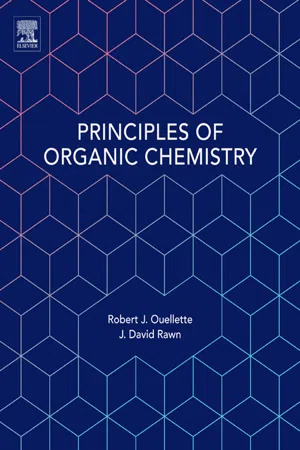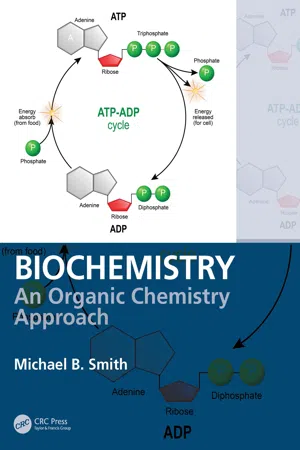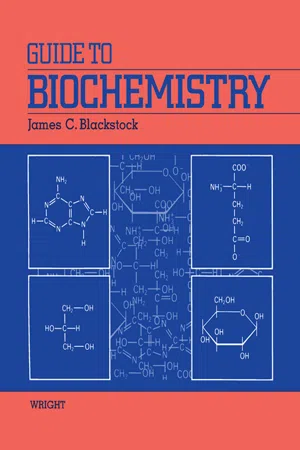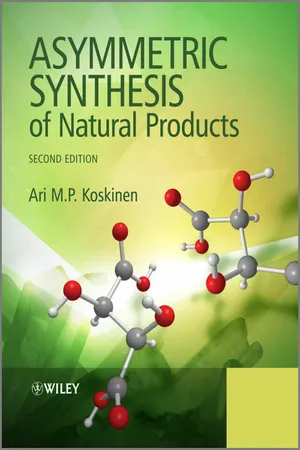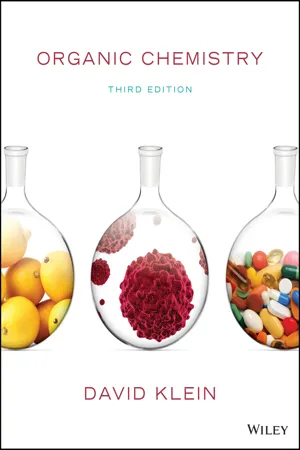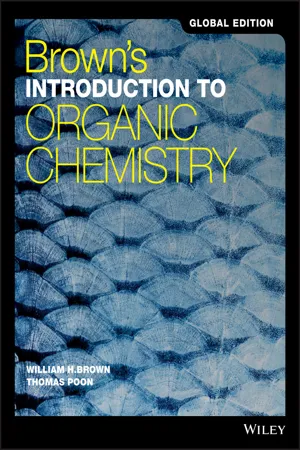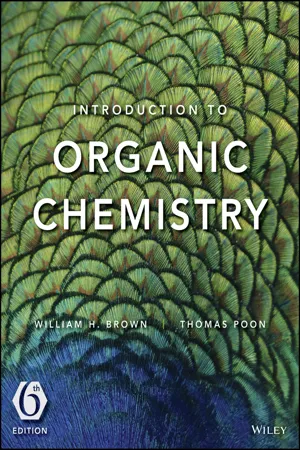Chemistry
Amino Acids Peptides and Proteins
Amino acids are the building blocks of proteins, consisting of a central carbon atom bonded to an amino group, a carboxyl group, a hydrogen atom, and a side chain. Peptides are short chains of amino acids linked by peptide bonds, while proteins are larger, complex molecules made up of one or more polypeptide chains. These molecules play crucial roles in the structure and function of living organisms.
Written by Perlego with AI-assistance
Related key terms
1 of 5
12 Key excerpts on "Amino Acids Peptides and Proteins"
- eBook - ePub
- Jan Velisek(Author)
- 2013(Publication Date)
- Wiley-Blackwell(Publisher)
Chapter 2
Amino Acids, Peptides and Proteins
2.1 Introduction
Aminocarboxylic acids (see p. 5) occurring in nature have vital functions in living organisms. Many of these amino acids are found as free substances or higher molecular weight compounds, where the amino acid building units are connected to each other by amide bonds, —CO–NH–, termed peptide bonds. Depending on the size of the molecule (the number of bound amino acids), these compounds are divided into two large main groups, which are:- peptides, usually composed of 2–100 monomers
- proteins, which contain more than 100 monomers, but also hundreds or even thousands of amino acids.
Proteins and peptides may even contain some further compounds in addition to amino acids. Proteins are undoubtedly the most important amino acid derivatives: they are the basic chemical components of all living cells and therefore are also part of almost all food raw materials and foods of plant, animal and microbial origin. In organisms, proteins perform a number of unique and extraordinary functions. Along with ribonucleic acids (RNA) and deoxyribonucleic acids (DNA), polysaccharides, some lipids and other macromolecules (such as polyisoprene, the major component of rubber tree latex), peptides and proteins are often known as biological polymers or biopolymers. Nucleic acids (RNA and DNA) have almost no significance as food components in human and animal nutrition, although they play fundamental roles in living systems. Plants and some microorganisms are capable of synthesising proteins from basic substrates such as carbon dioxide, water and inorganic nitrogen compounds, but animals rely on getting their necessary vegetable or animal protein from their food. In the process of digestion, the food proteins are enzymatically broken down (hydrolysed) to their building blocks, from which animals may synthesise their own proteins or use them (along with carbohydrates and lipids) as a source of energy. Therefore, proteins, together with carbohydrates and lipids, belong to the category of main (primary) nutrients - eBook - PDF
- Allan Blackman, Steven E. Bottle, Siegbert Schmid, Mauro Mocerino, Uta Wille(Authors)
- 2022(Publication Date)
- Wiley(Publisher)
CHAPTER 24 Amino acids, peptides and proteins LEARNING OBJECTIVES After studying this chapter, you should be able to: 24.1 define the structure of amino acids 24.2 control the charge present on amino acids using pH 24.3 describe the linking of amino acids together to make peptides and proteins 24.4 categorise protein structures as 1°, 2°, 3° or 4° 24.5 explain the functional importance of the three-dimensional shape of proteins 24.6 exploit chemical and physical processes to change protein properties. Amino acids are molecules that contain both an amine functional group (described in the chapter on alcohols, amines and related compounds) and a carboxylic acid functional group (described in the chapter on carboxylic acids). Amino acids are important in their own right, but they are also critically important for life as they provide the building blocks of peptides and proteins. In this chapter we will look at the acid– base properties of amino acids, as these control much of the nature of peptides and proteins. Understanding the chemistry of amino acids allows us in turn to understand the more complex structures and properties of peptides and proteins. Proteins are among the most important of all biological compounds as they are integrally important in the vital functions of: • movement: muscle fibres are made of proteins called myosin and actin • catalysis: virtually all 1that take place in living systems are catalysed by a special group of proteins called enzymes • structure: structural proteins such as collagen and keratin are the chief constituents of skin, bones, hair and fingernails • transport: the protein haemoglobin is responsible for the transport of oxygen from the lungs to tissues, while other proteins transport molecules across cell membranes • protection: a group of proteins called antibodies represent one of the body’s major defences against disease. Peptides are a major component of the supplements and health food sector. - eBook - ePub
Essentials of Organic Chemistry
For Students of Pharmacy, Medicinal Chemistry and Biological Chemistry
- Paul M. Dewick(Author)
- 2013(Publication Date)
- Wiley(Publisher)
13 Amino acids, peptides and proteins 13.1 Amino acids Numerous amino acids are found in nature, but in this chapter we are concerned primarily with those that make up the structures known as peptides and proteins. Peptides and proteins are both polyamides (see Section 7.10) composed predominantly of α-amino acids linked through their carboxyl and α-amino functions. In biochemistry, the amide linkage is traditionally referred to as a peptide bond. Whether the resultant polymer is classified as a peptide or a protein is not clearly defined; generally, a chain length of more than 40 residues confers protein status, whereas the term polypeptide can be used to cover all chain lengths. Proteins in all organisms are made up from the same set of 20 α-amino acids, though the organism is not necessarily capable of synthesizing all of these. Some amino acids are obtained from the diet. The amino acids are combined in a sequence that is defined by the genetic code, the sequence of bases in DNA (see Section 14.2.4). Table 13.1 gives the structures of these 20 amino acids together with the standard three-letter and one-letter abbreviations used to represent them. Proline is strictly an imino acid rather than an amino acid, but it is normally included as one of the 20 amino acids. The amino acids are also subclassified according to the chemical and physical characteristics of their R substituent - eBook - PDF
- David R. Klein(Author)
- 2021(Publication Date)
- Wiley(Publisher)
25.1 Introduction to Amino Acids, Peptides, and Proteins 1195 25.1 Introduction to Amino Acids, Peptides, and Proteins Throughout this book, particularly in the BioLinks boxes, we have explored the relationship between the structure of a compound and its medicinal activity. The relationship between structure and activ- ity is perhaps most striking for biological molecules called proteins. Proteins are polymers that are assembled from amino acid monomers that have been linked together, much like jigsaw puzzle pieces (Figure 25.1). Each amino acid contains an amino group (shown in red) and a carboxylic acid group DO YOU REMEMBER? Before you go on, be sure you understand the following topics. If necessary, review the suggested sections to prepare for this chapter: • Designating Configuration Using the Cahn–Ingold–Prelog System (Section 5.3) • Structure and Properties of Carboxylic Acids (Section 20.3) • Nucleophilic Acyl Substitution (Section 20.7) • Properties of Amines (Section 22.3) Take the DO YOU REMEMBER? QUIZ in the online course to check your understanding. FIGURE 25.1 An illustration showing how amino acids serve as building blocks for proteins. H N H C C R O OH H Amino acid H N H C C R O OH H Amino acid Protein N H C C R O H N H C C R O H N H C C R O H OH C C R O H N H H N H C C R O H (shown in blue). It is the presence of these two functional groups that enables amino acids to link together. An amino acid can have any number of carbon atoms separating the two functional groups, but of particular interest are the alpha (α) amino acids in which the two functional groups are sepa- rated by exactly one carbon atom. H N H C C R O OH H COOH R H 2 N An α-amino acid Functional groups are separated by only one carbon atom. Amino acids of this type are called α-amino acids because the amino group is connected to the car- bon atom that is alpha (α) to the carboxylic acid group. - eBook - ePub
- Robert J. Ouellette, J. David Rawn(Authors)
- 2015(Publication Date)
- Elsevier(Publisher)
14Amino Acids, Peptides, and Proteins
The highest operation in nature and in art is the attainment of significant form .Goethe14.1 Proteins and Polypeptides
From amoebas to zebras, the proteins of all organisms contain α-amino acids linked by amide bonds between amino and carboxylic acid functional groups. In proteins, amide bonds are called peptide bonds.The name protein is derived from the Greek proteios, meaning “pre-eminence” or “holding first place,” which reflects the crucial role that proteins play in virtually all cellular processes. The name was suggested in 1839 by the Dutch chemist Gerardus Johannes Mulder, who could not have known how prophetic his suggested name would be. Proteins have an extraordinary range of functions. Proteins called enzymes catalyze nearly all of the chemical reactions in cells. Proteins are required for the transport of most substances across cell membranes. They are the major structural substances of skin, blood, muscle, hair, and other tissues of the body. Proteins in the immune system, called antibodies, resist the effects of foreign substances that enter the body.Proteins are polymers of 50 or more α-amino acids; some proteins contain more than 8000 amino acid units. Polypeptides are smaller molecules that contain fewer than about 50 amino acids. Some important hormonal polypeptides with physiological functions such as pain relief and control of blood pressure contain as few as nine amino acid units.We begin this chapter by describing the structure and properties of the 20 amino acids isolated from proteins. Then we will consider the structure and properties of polypeptides and proteins. We will also describe the chemical synthesis of polypeptides and analytical methods to determine their structure.14.2 Amino Acids
Amino acids contain both an amino group and a carboxylic acid group. About 250 have been found in natural sources; however, only 20 of them occur in large amounts in proteins (Table 14.1 - eBook - ePub
Biochemistry
An Organic Chemistry Approach
- Michael B. Smith(Author)
- 2020(Publication Date)
- CRC Press(Publisher)
12 Peptides and ProteinsPolymeric chains of amino acids are peptides, and proteins are poly(peptides). Proteins are essential to living systems and the critically important proteins called enzymes catalyze processes that are essential to life. This chapter will discuss peptides, their characteristics and how they are formed. In addition, the structure and function of proteins will be discussed.12.1 Reactions and Synthesis of α-Amino Acids
Amino acids undergo several important reactions that are dominated by the amine group and/or the carboxyl group. The fact that the amine and the carboxyl react with each other complicates things, because one functional group will influence the reactivity of the other. The conversion of a simple carboxylic acid to an ester is quite easy, either by reaction of the carboxylic acid with an alcohol under acidic conditions, or by first converting the acid to an acid chloride and subsequent reaction with an alcohol. However, amines also react with acid chlorides or with esters to yield the corresponding amide. In other words, trying to form an ester in the presence of an amine may be a problem. To target one functional group in an amino acid, the other must be taken into account and usually blocked (protected) with a functional group that can be removed after the planned reaction.The carboxylic acid group of an amino acid can be converted to an ester by reaction with an alcohol in the presence of aqueous acid. Using the zwitterion form of alanine as an example, treatment with acid generates the protonated form, (1S )-carboxyethanaminium. Subsequent reaction of aqueous ethanol and an acid catalyst converts the COOH unit to the corresponding ester of alanine. The amine unit exists as its ammonium salt in the aqueous acid medium.The amine unit of an amino acid can be functionalized. Reaction of the amine group of alanine was treated with trifluoroacetic anhydride and pyridine to give the N-trifluoroacetamide derivative.1 If desired, the COOH unit can be functionalized and the COCF3 unit can easily be converted back to the amine by reaction with K2 CO3 in aqueous methanol. As shown for aspartic acid, the distal carboxyl group can be converted to the methyl ester by reaction with thionyl chloride and then methanol. Subsequent reaction with benzyl carbonochloridate (benzyloxy chloride; Cbz-Cl) gives the corresponding N- carbobenzoxyl or N-Cbz derivative.2 - eBook - ePub
- James C. Blackstock(Author)
- 2014(Publication Date)
- Butterworth-Heinemann(Publisher)
Today the immense variety of protein molecules is recognized. Proteins are the most abundant macromolecules found within cells and perform a wide variety of functions (Section 1.6). A protein can be considered as a unique polymer of amino acids (Section 1.4) which determine its chemical and structural properties. It is therefore imperative to consider the amino acids before embarkation upon a discussion of protein structure. Of the 308 catalogued natural amino acids, only 20 (plus a few derivatives) occur in proteins in which all are α-amino acids of the L -series (Section 1.3). They conform (except proline) to a general formula (Figure 4.1) in which an amino group and a carboxylic acid group are attached to the α-carbon (C α) atom. Proline, an imino acid, is normally included because of its occurrence in proteins. The properties of individual amino acids vary according to the nature of the R group called the side chain (Table 4.1). Asparagine and glutamine are considered as amide derivatives of aspartic acid and glutamic acid respectively. Tyrosine may be classified either by its hydroxy or aromatic group. To refer to amino acids in polypeptide sequences, three- or one-letter codes are frequently employed. L -α-Amino acids, with the exception of glycine, contain a chiral α-carbon atom (Section 1.3). These amino acids exhibit optical activity; in some cases, dextrorotatory, e.g. alanine, in other cases laevorotatory, e.g. phenylalanine. Because of the conjugated double-bond system of their aromatic rings, tyrosine, tryptophan and phenylalanine absorb light in the ultraviolet region - eBook - ePub
- Ari M. P. Koskinen(Author)
- 2012(Publication Date)
- Wiley(Publisher)
Chapter 5 Amino Acids, Peptides, and ProteinsPeptides and proteins play a central role in the function of cells and organs. Large proteins can support the structure of the cell. Proteins catalyzing chemical transformations are called enzymes. Some proteins participate in the transfer of information and signals between cells, where they are called receptors. Enzymes and receptors are often extremely sensitive in recognizing specific molecules, and by way of their intrinsic asymmetric structure, they exhibit high discrimination toward optical antipodes. This phenomenon is known as substrate selectivity. Smaller peptides can function as chemical messenger molecules in vital signal transduction processes, for example, in the central nervous system (neurotransmitters) and hormonal activity (peptide hormones).Whether one considers a large enzyme complex composed of several peptide chains, which catalyzes chemical reactions, or a small neurotransmitter peptide, they share the common feature of being constructed of amino acids.In this chapter, we will take a look at the amino acids and polypeptides, especially in terms of structure and synthesis. We shall finally briefly review enzymes, their properties and function, and the factors controlling them.5.1 Amino Acids
Natural peptides and proteins are built from 21 so-called natural or more appropriately DNA-encoded or proteinogenic amino acids (Figure 5.1 ). Twenty of them occur universally in living species, and are coded for by three-codon sequences in DNA (Figure 5.2 ). Selenocysteine and pyrrolysine (see Scheme 5.11 ) are coded for in certain species at the mRNA level indirectly by overriding the natural stop codons (TGA for selenocysteine and TAG for pyrrolysine). The amino acids are, with the exception of glycine, optically active, in other words their α-carbon is asymmetrically substituted. With the exception of certain microbial products, all natural amino acids belong to the same stereochemical series (l), where the absolute stereochemistry of the chiral carbon is S. Cysteine makes an exception, where the stereochemical designation is R - eBook - PDF
- David R. Klein(Author)
- 2016(Publication Date)
- Wiley(Publisher)
25 25.1 Introduction to Amino Acids, Peptides, and Proteins 25.2 Structure and Properties of Amino Acids 25.3 Amino Acid Synthesis 25.4 Structure of Peptides 25.5 Sequencing a Peptide 25.6 Peptide Synthesis 25.7 Protein Structure 25.8 Protein Function Amino Acids, Peptides, and Proteins DID YOU EVER WONDER . . . how crime-scene investigators are able to find invisible fingerprints and render them visible? A fingerprint can often be the most important piece of evidence left behind at the scene of a crime. Police investigators use a variety of methods to visualize fingerprints. One such method involves the use of a chemical agent called ninhydrin, which reacts with the amino acids present in the fingerprint to produce colored compounds that can be seen. But what are amino acids, why are they present in our fingerprints, and what function do amino acids serve? In this chapter, we will explore the structure and properties of amino acids, and we will see how they function as the building blocks that nature employs to assemble important biological com- pounds called peptides and proteins. These compounds serve a wide array of functions, as we will see later in this chapter. This chapter focuses on the structure, properties, function, and synthesis of amino acids, peptides, and proteins. 1148 CHAPTER 25 Amino Acids, Peptides, and Proteins DO YOU REMEMBER? Before you go on, be sure you understand the following topics. If necessary, review the suggested sections to prepare for this chapter: • Designating Configuration Using the Cahn–Ingold–Prelog System (Section 5.3) • Structure and Properties of Carboxylic Acids (Section 20.3) • Nucleophilic Acyl Substitution (Section 20.7) • Properties of Amines (Section 22.3) Take the DO YOU REMEMBER? QUIZ in to check your understanding. - eBook - PDF
- William H. Brown, Thomas Poon(Authors)
- 2017(Publication Date)
- Wiley(Publisher)
18.4 What Are Polypeptides and Proteins? • A peptide bond is the special name given to the amide bond formed between α‐amino acids. • A polypeptide is a biological macromolecule containing 20 or more amino acids joined by peptide bonds. • By convention, the sequence of amino acids in a polypep- tide is written from the N‐terminal amino acid toward the C‐terminal amino acid. • A peptide bond is planar; that is, the four atoms of the amide bond and the two α‐carbons bonded to it lie in the same plane. • Bond angles about the amide nitrogen and the carbonyl carbon of a peptide bond are approximately 120°. 18.5 What Is the Primary Structure of a Polypeptide or Protein? • The primary (1°) structure of a polypeptide or protein refers to the sequence of amino acids in its polypeptide chain. • The first step in determination of primary structure is hydrolysis and quantitative analysis of amino acid compo- sition by ion‐exchange chromatography. • Cyanogen bromide is specific for the cleavage of peptide bonds formed by the carboxyl group of methionine. • Trypsin catalyzes the hydrolysis of peptide bonds formed by the carboxyl groups of arginine and lysine. • Chymotrypsin catalyzes the hydrolysis of peptide bonds formed by the carboxyl groups of phenylalanine, tyrosine, and tryptophan. • The Edman degradation selectively cleaves the N‐terminal amino acid without affecting any other peptide bonds in a polypeptide or protein. Quick Quiz 619 18.6 What Are the Three‐Dimensional Shapes of Polypeptides and Proteins? • The four atoms of a peptide bond and the two α‐carbons bonded to it all lie in the same plane; that is, a peptide bond is planar. • Secondary (2°) structure refers to the ordered arrangement (conformations) of amino acids in localized regions of a polypeptide or protein. The two most prevalent types of secondary structure are the α‐helix and the β‐pleated sheet, both of which are stabilized by hydrogen bonding. - eBook - ePub
Wheat
Chemistry and Utilization
- Hugh Cornell, Albert W. Hoveling(Authors)
- 2020(Publication Date)
- CRC Press(Publisher)
CHAPTER 7Amino Acids, Peptides, and Proteins
7.0 INTRODUCTION
T HE proteins form a particularly diverse group of compounds, ranging from structural proteins to key molecules such as enzymes and hormones. The proteins in wheat are also diverse in nature and include a group of enzymes as seen in Section 1.7 .Proteins are found in animals and plants where they constitute a large percentage of the dry weight of cells. They form an important part of the diet and are very valuable in this respect, as they provide essential amino acids, numbering about nine. The daily requirements of most of these amino acids are about 10–14 mg/day/kg of body weight for adults, with tryptophan and threonine being 3.5 and 7 mg/day/kg, respectively, according to the FOA/WHO (1973). The requirements of total protein intake are given as 570 mg/day/kg for men and 520 mg/day/kg for women. Infants require larger quantities of essential amino acids and proteins on a per kg body-weight basis. A good guide is an intake of about 8% of the total calorie intake as protein. Higher figures than this may be detrimental to health, especially if fatty meat is a significant contributor.Proteins in the body are continuously degraded to amino acids (catabolism) and must therefore be synthesized in corresponding amounts (anabolism). These processes are quite rapid in the liver and the small intestine, whereas they are slow in the muscles and connective tissues. Nitrogen is released in the urine, mainly as urea.7.1 AMINO ACIDS
Altogether, over 20 amino acids are present in naturally occurring proteins. These are mostly of the α-amino structure and are usually of the L -configuration. In Fischer projection they are written as shown:The Fischer projection of an α-amino acid (L -configuration) shows its relationship to L - eBook - PDF
- William H. Brown, Thomas Poon(Authors)
- 2016(Publication Date)
- Wiley(Publisher)
• The side‐chain guanidine group of arginine is a considera- bly stronger base than an aliphatic amine. This remarkable basicity is attributed to the large resonance stabilization of the protonated form relative to the neutral form. • The isoelectric point, pI, of an amino acid, polypeptide, or protein is the pH at which the majority of its molecules have no net charge. • Electrophoresis is the process of separating compounds on the basis of their electric charge. Compounds with a higher charge density move more rapidly than those with a lower charge density. • Any amino acid or protein in a solution with a pH that equals the pI of the compound remains at the origin. One with a net negative charge moves toward the positive elec- trode, and one with a net positive charge moves toward the negative electrode. 18.4 What Are Polypeptides and Proteins? • A peptide bond is the special name given to the amide bond formed between α‐amino acids. • A polypeptide is a biological macromolecule containing 20 or more amino acids joined by peptide bonds. • By convention, the sequence of amino acids in a polypep- tide is written from the N‐terminal amino acid toward the C‐terminal amino acid. • A peptide bond is planar; that is, the four atoms of the amide bond and the two α‐carbons bonded to it lie in the same plane. • Bond angles about the amide nitrogen and the carbonyl carbon of a peptide bond are approximately 120°. 18.5 What Is the Primary Structure of a Polypeptide or Protein? • The primary (1°) structure of a polypeptide or protein refers to the sequence of amino acids in its polypeptide chain. • The first step in determination of primary structure is hydrolysis and quantitative analysis of amino acid compo- sition by ion‐exchange chromatography. • Cyanogen bromide is specific for the cleavage of peptide bonds formed by the carboxyl group of methionine. • Trypsin catalyzes the hydrolysis of peptide bonds formed by the carboxyl groups of arginine and lysine.
Index pages curate the most relevant extracts from our library of academic textbooks. They’ve been created using an in-house natural language model (NLM), each adding context and meaning to key research topics.

